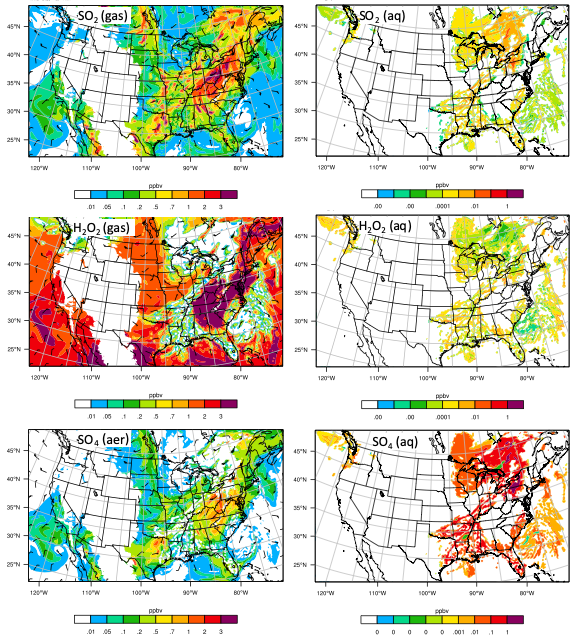Develop, deliver, support advanced community models on WRF-Chem
The main model development for WRF-Chem was implementing a new approach for solving aqueous chemistry in cloud water with the MOZART-T1 chemistry option. The approach is to solve the aqueous chemistry with the gas-phase chemistry. This approach contrasts with the current approach used with the MOSAIC aerosol and cloud water scheme, which is to split the operations by solving the gas-phase chemistry first, the aqueous-phase cloud water chemistry subsequently. The new approach is a better configuration for future aqueous-phase chemistry model development, as modifying the aqueous-phase chemistry mechanism can be done in the input files rather than within the WRF-Chem code. The gas and aqueous chemistry are solved together, which allows for highly soluble trace gases to have reduced concentrations as reactants in the gas phase. Thus far, simple aqueous-phase sulfur chemistry is implemented. The figure shows aqueous-phase mixing ratios of SO2, H2O2, and sulfate in cloud water in regions where their gas-phase counterpart has been depleted. We expect the infrastructure developed here for WRF-Chem to be ported to the Model Independent Chemistry Module.
WRF-Chem version 4.2 will include output information for the pH of cloud water and MOSAIC aerosols when MOSAIC 4-bin aerosol scheme is selected. The pH of cloud water and aerosols can be used as a metric for evaluating simulations with measurements from monitoring stations (e.g. Whiteface Mountain Observatory in New York) and field experiments.

Contact
Please direct questions/comments about this page to:
Carl Drews
NSF NCAR | Research IT | ACOM